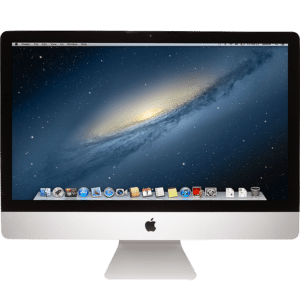OS X (now rebranded as macOS) is Apple’s proprietary operating system designed for its Mac computer line. Launched in 2001 as a replacement for the older Mac OS, OS X has evolved into one of the most polished and secure operating systems available, praised for its clean user interface, performance, and seamless integration with other Apple devices.
History of OS X
Apple’s shift from the classic Mac OS to OS X marked a significant moment in computing history. The first version of OS X, codenamed Cheetah, was a revolutionary departure from the older system, both in terms of design and underlying architecture. The name “OS X” remained in use until 2016, when Apple rebranded it as macOS to align it with other operating systems in their ecosystem, such as iOS (for iPhones) and watchOS (for the Apple Watch).
Originally, the operating system’s versions were named after large cats, including Jaguar, Panther, and Leopard. In 2013, Apple switched to using California landmarks like Mavericks, Yosemite, and Big Sur, reflecting the operating system’s deep-rooted connection to innovation and exploration.
Key Features of OS X

Apple OS X Image Source PNGWING
1. User Interface (UI)
The hallmark of OS X is its distinctive, minimalist user interface, built on Apple’s Aqua design language. It offers a visually appealing and intuitive experience, with features like translucent elements and crisp icons.
The Dock is one of OS X’s standout elements, providing a space for users to easily access their most-used applications and documents. The interface is designed to reduce clutter while increasing accessibility, making it highly user-friendly.
2. Finder
Finder serves as the core file management system in OS X, allowing users to browse, organize, and manage files and applications with ease. With the ability to tag files and use customizable views, Finder simplifies file navigation in a visually appealing way.
3. Spotlight
A powerful search tool, Spotlight indexes all content on a Mac, allowing users to find files, apps, emails, and even web content instantly. Its advanced search capabilities go beyond file names, making it possible to search by keywords, metadata, and more.
4. Mission Control
This feature allows users to see an overview of all open windows, desktops (Spaces), and full-screen apps. Mission Control enhances multitasking by letting users seamlessly switch between different apps and desktop environments.
5. Integration with Apple Ecosystem
One of OS X’s key strengths is its integration with other Apple products and services. iCloud ensures that files, photos, and even messages are synced across Apple devices. Users can also make and receive calls, send text messages, and share files wirelessly through AirDrop.
Technical Foundations
1. Unix-based Architecture
OS X is built on a Unix-based foundation, giving it a highly stable and secure environment. This architecture also makes OS X particularly appealing to developers, who appreciate the compatibility with Unix-based development tools and the underlying power that the OS provides.
2. Security
Apple has long emphasized security and privacy in its software. OS X comes equipped with built-in security features such as sandboxing, which limits the actions that apps can perform, and frequent security updates. Combined with its Gatekeeper technology that ensures only trusted apps are installed, OS X has earned a reputation as one of the most secure consumer operating systems.
3. Optimized for Apple Hardware
Unlike other operating systems, which are designed to work across a wide range of devices, OS X is built specifically for Apple’s hardware. This allows the software and hardware to work in unison, ensuring that users experience optimized performance, efficiency, and stability on their Macs.
Conclusion
OS X (now macOS) represents a harmonious blend of elegant design, robust security, and seamless integration with Apple’s ecosystem. As a Unix-based system, it has become a favorite among both everyday users and developers. With regular updates and new features that push the boundaries of innovation, OS X remains a defining element of Apple’s Mac computers.




















